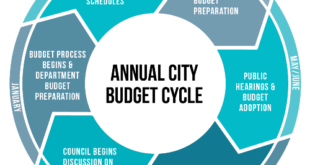By Bart Pfankuchj
As journalists, we all seek to be objective when it comes to news coverage. Producing balanced, unbiased reporting has never been more critical.
And yet, true objectivity is difficult to obtain, particularly when the best journalism is also probing, critical and focused on complex, multi-pronged problems.
 Therefore, achieving objectivity takes far more energy and effort than writing opinion. The goal is to do the work up front so that readers and viewers, even in this highly charged media environment, can consume news and not feel the view of the reporter seeping through.
Therefore, achieving objectivity takes far more energy and effort than writing opinion. The goal is to do the work up front so that readers and viewers, even in this highly charged media environment, can consume news and not feel the view of the reporter seeping through.
I faced a major challenge in this area recently when producing a package examining the rapid growth of concentrated animal feeding operations in South Dakota. For those not familiar, CAFOs are large livestock operations that breed, feed and house thousands and in some cases millions of animals in confined, mostly indoor spaces. CAFOs are the source of the vast majority of meat produced in the United States each year.
To my pleasant surprise, the package that published on our website, on social media and in newspapers across the Rushmore State drew extensive discussion and response, but not much criticism in regard to how the material was reported or presented.
Here are some tips I learned along the way that you can use to make your reporting more objective.
Thorough, balanced sourcing
This is of utmost importance. Inadequately sourced stories will be open to criticism that the writer missed a major point or position, perhaps even on purpose. To write with authority and balance on a hot topic, the reporter must gain a deep understanding of the facts, research, context, history and opinions surrounding a topic.
For the CAFO package,I toured three farms, attended a public hearing on a project, met with farm neighbors at their kitchen tables, read a dozen studies on farm impacts, spoke to industry experts, examined inspection records, obtained state production data and interviewed government officials. When it came time to write, I was ready to do so with authority, clarity and balance.
Smart, careful sourcing
Who you talk to will affect what you learn when it comes to touchy subjects. On the CAFO project, it would have been easy to interview someone from the People for the Ethical Treatment of Animals or some other like-minded group to get opinions on animal treatment.
But I knew that quoting PETA, or some other group with edgy views, would damage my credibility with South Dakotans. Instead, I dove in deeper and found more academic, ground-level sources to discuss animal treatment, which is certainly a concern for some opponents.
Seek out the ‘real people’
Interviewing neighbors and meeting actual CAFO operators provided a critical, up-close perspective on the farms and their impacts. The entire second segment of the package was devoted to the stories of real farmers and details on animal treatment and waste management.
Visiting the farms also allowed me to provide my own observations of odors, cleanliness and animal treatment. I noted when the air was foul and when it wasn’t, and told of how flies invaded my vehicle when parked briefly outside a huge egg-laying plant.
Frame the piece carefully
Every section of the package, and sometimes individual paragraphs, were framed to give one side of an issue and then the other. For each farmer or official who sees CAFOs as efficient economic powerhouses, I quoted a neighbor or researcher who had concerns about health or environmental outcomes.
I tried to keep the opposing voices close to one another when addressing each topic. I used the same approach with data — one side and then the other.
Avoid loaded language
In nearly 8,000 words, I never used the phrases “factory farms” or “industrial livestock operation” or “mega farms.” They were only “CAFOs” or “large livestock operations.” Conversely, I did not refer to animal wastes as “nutrients” as producers wanted.
Be clear and accurate and leave loaded language solely to quotations, if even then.
Use fair, straightforward headlines/cutlines
After all your efforts to be fair, don’t let a bad headline zap your objectivity. Stick to the facts and try to highlight the big picture. After much consideration, I ended up with “Expansion of large CAFO livestock operations causing division and concern across South Dakota.” Not the spiciest, but a fair overview.
Let sources know what’s coming
Throughout the project, I never let a source think I was taking sides or that I could be converted to one side or another, even though I was deeply interested in what they had to say.
I frequently reminded people on both sides of the issue that I was examining all sides, including but not limited to sharing their views so no one was surprised in the end.
Do not take a side
This seems obvious, but if you get swept up and take a side, sources will know immediately in how and what you ask them and readers will dismiss your work as biased.
The reporter must commit to not committing to one side or another or all may be lost.
 Nevada Press Association The best in Nevada journalism since 1924
Nevada Press Association The best in Nevada journalism since 1924


